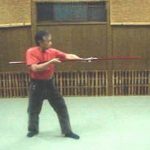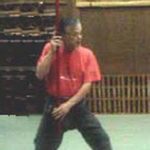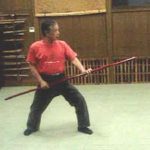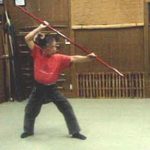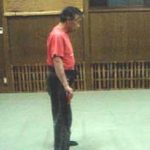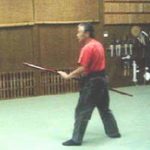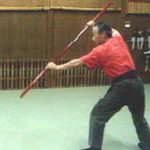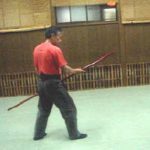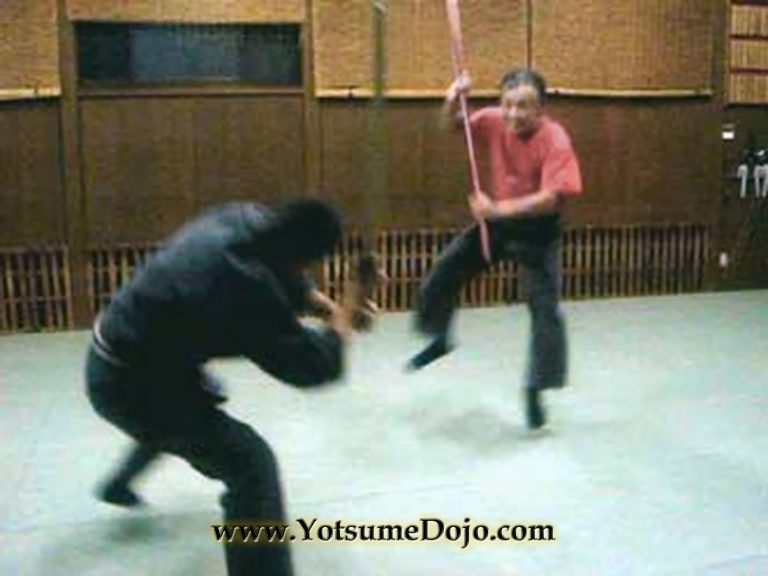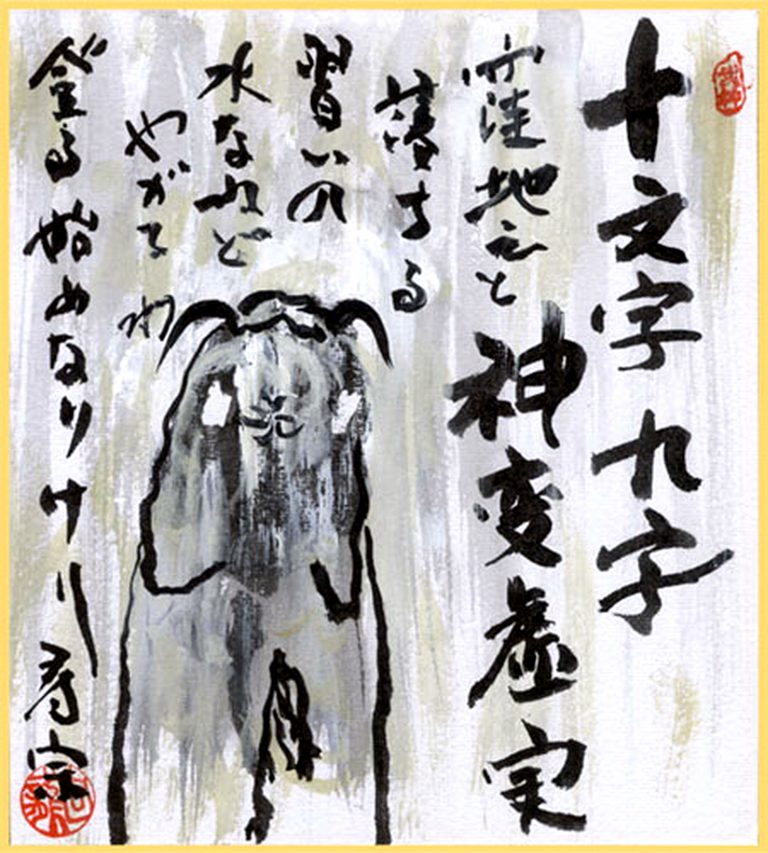九鬼神流六尺棒術
Kukishin-ryu Rokushaku Bojutsu
PART 1 - OBSERVATIONS (Bad Points to Avoid)
“Training with someone who is lazy is worse then training with the enemy.” – Hatsumi Sensei
With such poor distance training you will never be able to catch the proper applications of Kyo and Jitsu in the forms. How can you make a strike to the top of their head seem and feel real if you can’t even reach their head with your Bo to begin with! Your opponent has no reason to block if you can’t actually reach them! It is important to be able to make your opponent believe that your strikes to specific targets are real (because they are real… but you have the freedom in your Sabaki Gata to change). In the timing of when the opponent’s mind makes this choice that a strike is real, you change! This is the interchange of Kyo and Jitsu. This connection and ability to change in time with elements you can’t see is called “Shinpen” 神変. Together this stage is called Shinpen Kyojitsu 神変虚実. So when you have poor basics and distancing you will fail at being able to effect the opponent and issue forth a strong will “Ichinen” that can make them believe and move according to your wish.
When you train the Bojutsu Kata the sword attacker must actually try and cut the person and really try and cut their targets. The same must hold true for the person with the Bo! Slow down and don’t let these bad distance habits be how you train. When you practice the Bo Kata correctly there should be a great “air pressure” between you and your opponent that is created because their is a real chance you will get hit or cut. When you practice with such unrealistic Ma-Ai nothing is created but bad habits.
- No pressure created between you and the opponent
- Wrong Distancing
- Not thirding (extending) the length of the Bo during strikes.
- Your Tsuki can’t reach the opponent (nor was it done with intention to)
- Don’t put your Gokoku Kyusho directly on the Bo during strikes.
- Use you elbows at an angle to have better bone alignment to back up your strikes.
- Ashi-sabaki is so linear there is zero understanding of strategy/setups.
- Missing all placement of Kyo and Jitsu in the Kata.
- Feeling issued forth is monotone.
- There is zero chance the Bo person won once the form was done. Sorry, but if you are doing a Bo Kata the Bo person wins and the sword person gets struck down!
PART 2 - Shinpen Kyojitsu and Five Step Process
Hisshō Hō Kyohen no Kamae 必勝法虚変之構 Certain Victory Method – Always win by employing a false varying changing posture.
Shinpen Kyojitsu 神変虚実 means“God’s natural changes and deceptive appearances.” Shinpen 神変 is the ability to change ahead of the opponent’s intentions because you can “read” them, thereby making a change in such a way that your opponent cannot comprehend it with their five senses alone. If you can achieve this, you will no longer have to rush through your technique. Shinpen Kyojitsu together is the ability to read your opponent’s mind and heart while you are attacking or defending. This allows you to make changes they cannot keep up with because your timing is with their thoughts, not just with their physical reactions, which we can see with our eyes. If you try to apply Kyojitsu 虚実 by what you see alone, your timing will always be off, and your techniques may or may not work. You must train the ability to empty yourself (Muga 無我) so you can reflect the hidden intentions of your opponent, securing a victory with minimum effort that has maximum effect. Shinpen Kyojitsu allows us to create a state of surprise or confusion within our opponent at will.
- KIHON: First we must know the Kihon. Many people do not really have solid enough Bojutsu Kihon or Kenjutsu Kihon to be able to even think about studying the Bojutsu Kata correctly.
- KATA GEIKO: Next, once we have the Kihon down for both sides of the Kata we can then practice the Kata correctly.
- SHINPEN KYOJITSU: Shinpen and Kyojutsu study are then added into the Kata training. How to link to our opponent with our sub-consciousness to naturally know the proper timing to make the changes between Jitsu and Kyo or Kyo and Jitsu within the Kata. (Often missing for people’s Kata demonstrations entirely!)
- KIAI: Next, after this the study of Kiai is added on top of these timings of Kyo and Jitsu application in the Kata to enhance their effect. Example: Kiai during a timing of Kyo to make the opponent really believe in your strike making it seem Jitsu… and then we change and make a real Jitsu in an opening created! In this manner, our timing is ahead of their timing to help secure a victory.
- KUJI: When you have all the above elements from #1-4, then you add in the Kuji associated with the particular Jutsu you are training. In this case, Kuji associated with the Bojutsu Kata. The Kuji like the Kiai enhance the effects on the opponent. Like the particular Kuji for being able to put the opponent into a state of confusion. Hatsumi Sensei has said that until you master Taijutsu then Kuji will be useless to you and there is Kuji in Taijutsu.

